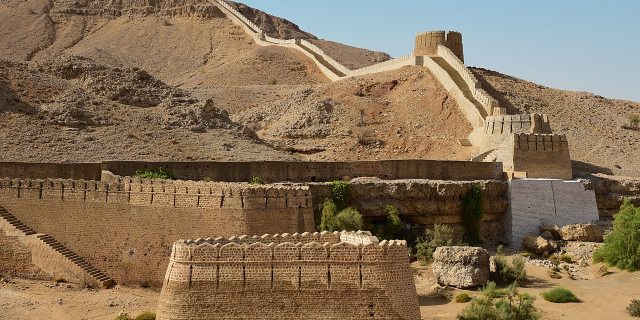Shrine of Lal Shahbaz Qalandar
The Shrine of Lal Shahbaz Qalandar (Urdu: لال شہباز قلندر مزار; Sindhi: لال شهباز قلندر جي مزار) is a shrine and mausoleum dedicated to the 13th century Muslim and Sufi saint, Lal Shahbaz Qalandar. The shrine is located in Sehwan Sharif, in the Pakistani province of Sindh. The shrine is one of the most important in Pakistan, and attracts up to one million visitors annually.
The shrine's construction was started under the reign of Shah Tughluq,[1] who ordered that the saint's remains be enshrined in Sehwan Sharif.[2] The tomb complex was built in 1356 C.E.,[3] though it has been expanded several times since its founding. Ibn Battuta mentions the shrine during his travels to the region in the mid-fourteenth century.[4] In 1639, the shrine was greatly expanded under the rule of Mirza Jani of the Tarkhan dynasty.[5] Though the shrine was founded centuries ago, its popularity expanded in the late 20th century.[6]
On 16 February 2017, the Islamic State of Iraq and the Levant – Khorasan Province claimed responsibility for a suicide attack at the shrine that resulted in the deaths of 88 people.[7] The following morning, the shrine's caretaker continued the daily tradition of ringing the shrine's bell at 3:30am, and defiantly vowed that he would not be intimidated by terrorists.[8] The shrine's dhamaal, or meditative dancing ceremony, was resumed the very next evening following the attack.[9] A few days later, several leading Pakistani artists and performers partook in a dhamaal at the shrine as a defiant response to radical Islamists.[10] Another dhamaal session was held to mark the one year anniversary of the bombing, and was organised by Pakistani social activist Sheema Kermani.[11]






























Add new comment